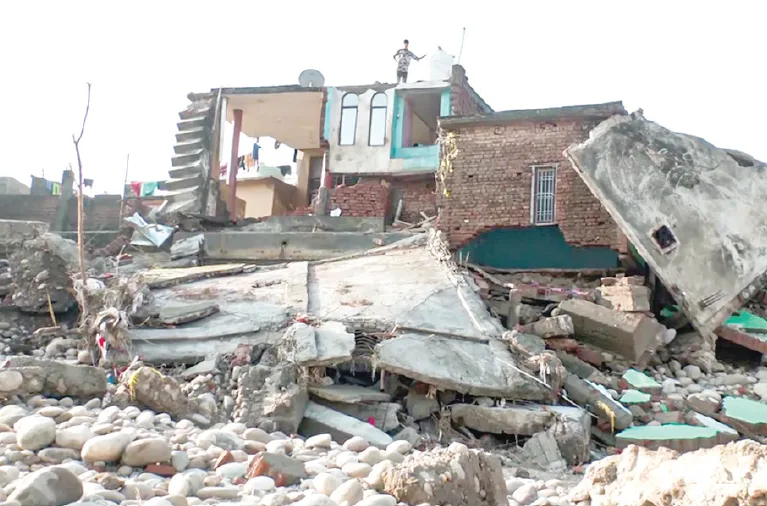Jammu and Kashmir, along with Ladakh, is grappling with one of the most devastating monsoon seasons in recent history. So far, 122 people have lost their lives, with many more reported missing and over 350 injured. The destruction follows a chain of 25 cloudbursts and nine landslides that have ravaged the region this month.
The latest disaster occurred late Friday in Rajgarh village, Ramban, where four lives were claimed, and one person remains missing. In Reasi’s Mahore area, a landslide buried a home, tragically claiming the lives of a couple and their five children. Many of the hardest-hit villages remain inaccessible, with roads, bridges, and communication lines heavily damaged.
The impact has extended to religious pilgrimages as well. Landslides have forced the suspension of the Vaishno Devi and Machail Mata yatras, stranding thousands of pilgrims and severely affecting the local economy. In areas like Kishtwar, Kathua, Doda, Reasi, Sonamarg, and Ramban, houses have been swept away, and agricultural fields have been destroyed, forcing survivors into makeshift tents. Economic damage is estimated to run into hundreds of crores.
Rescue operations are ongoing, with the Army, NDRF, and local authorities working tirelessly. However, officials fear the death toll could rise, as many people are still missing in hard-to-reach hamlets.
Meteorologists attribute the increasing frequency of cloudbursts to global warming and the region’s sensitive Himalayan terrain. “Short-duration, high-density rain events are becoming more common as global warming allows the atmosphere to hold more moisture,” said Dr. Mukhtar Ahmad, Director of MeT Kashmir. He also pointed out that the region’s steep slopes make it especially vulnerable to such disasters.
The India Meteorological Department has issued warnings of more heavy to very heavy rainfall over the next 24 hours, particularly in Kathua, Samba, Doda, Jammu, Ramban, and Kishtwar. The threat of additional cloudbursts and landslides remains high, with relief expected only after September 3.
For the people living in these mountainous areas, the past few weeks have underscored the vulnerability of the region to extreme weather. As rescue efforts continue, experts stress that without stronger disaster preparedness and climate adaptation measures, the impact of such disasters is likely to worsen.






